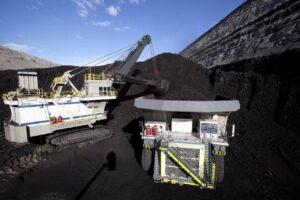While cost (down) and capacity (up) have been the focus of much of the hype around Tesla’s newly launched Powerwall 2, the US company’s addition of an inverter to its second generation battery units could also have major market implications.
At least that is the view of Simon Hackett, seasoned cleantech investor and CEO of Australian energy storage company Redflow, which makes zinc-bromine flow batteries and whose newly launched ZCell competes with Tesla’s Powerwall in the residential battery storage space.
In a blog published on his website on Monday, Hackett argues that Tesla’s launch of the Powerwall 2 battery with a built-in AC inverter marks “a clear breakpoint” for manufacturers of home energy storage systems, by taking a leaf from the Apple play-book of vertical integration.

“As with the Apple product ecosystem, this aims to establish Tesla as a single entry point for energy generation and storage systems in the home environment,” he writes. “Tesla has both the name and the resources to become a strong player in this realm.”
But Hackett believes that this “vertical stance” will take Tesla in the opposite direction to most of the rest of the industry, which has tended to more of a “horizontal” orientation: “a commercial ecosystem that offers choice at all layers of the energy storage system, using standardised interfaces to allow mix-and-match assembly of devices in the solution ‘stack’.”
The move also puts the company into direct opposition to its former allies, says Hackett – both existing inverter/charger vendors, that may be cut out of the Tesla solution set and experienced energy system installers.

“The Powerwall 2 unveiling is an interesting day for inverter/charger vendors such as Solar Edge, manufacturer of the inverter of choice for the original Powerwall, which is no longer required with Powerwall 2.
“Likewise it is an interesting day for Fronius, which makes a three-phase inverter that supports support the first Powerwall version. The launch also impacts SMA, which recently released its SMA Sunny Boy Storage, a high voltage DC Tesla Powerwall-compatible battery inverter – that is now superfluous to requirements.
“The bottom line for the emerging energy storage sector is that each time Tesla sells a Powerwall 2 with integrated AC inverter, an existing inverter/charger/energy control system vendor books one less sale,” Hackett writes.
“As a result, this new approach from Tesla may tend to polarise the market into two camps over time – with a distinct sensibility developing that is akin to the long-term battle of Apple vs Android in the smartphone market.”
Hackett says he remains confident in Redflow’s future, despite Tesla’s focus on, and achievements in, driving down price.
“Many industries demonstrate that price is not the only factor when consumers decide to buy,” he writes.
“Safety factors such as the thermal runaway potential for many lithium-based battery chemistries are an example of a non-price consideration that can be extremely significant in many markets.
“There is plenty of room in what is now a rapidly expanding market for a wide variety of energy storage alternatives. The bottom line is that Tesla’s presence in this market will drive increased interest in energy generation, storage and use. It will help to deliver further momentum to drive demand and adoption of energy storage systems in general.
“It will also act as a catalyst for other energy generation and storage systems – using a variety of technologies and deployed a variety of physical scales – to each find their own appropriate ‘place in the sun’.”
This article was originally published on RE sister site One Step Off The Grid. To sign up for the weekly newsletter, click here.








